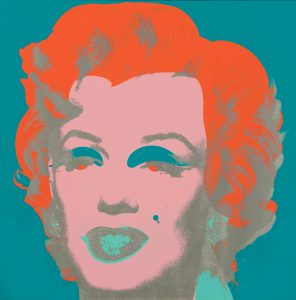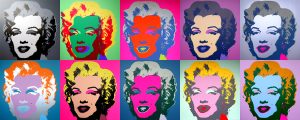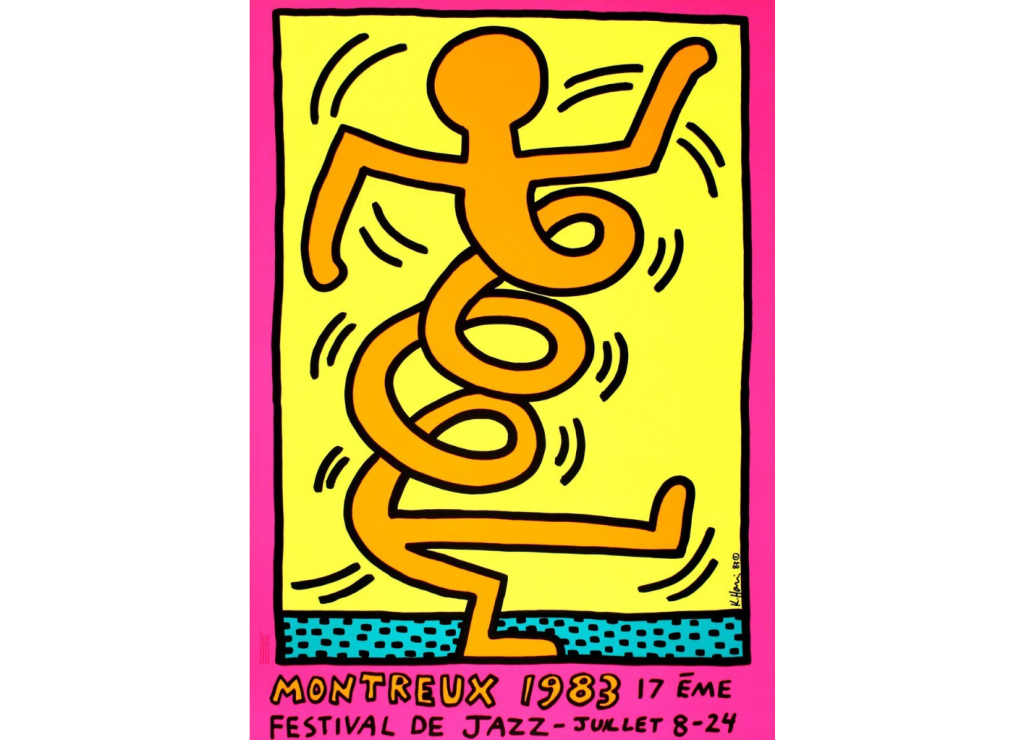Screen printing (also called silk screen printing and serigraphy) was first used in China during the Song Dynasty, lasting from 960-1279AD. The process then cropped up in Japan in the 15th century as a technique for transferring ink to silk before emerging as a process in Europe in the 18th century. It was not until later, when silk trading routes were more established between Asia and Europe, that screen printing became a more viable and profitable craft. The technique was first used to print fine wallpaper before being used for commercial uses. In the 1930s the National Serigraphic Society coined the term serigraphy to differentiate the artistic application of screen printing from the commercial. The word ‘serigraph’ comes from the Latin sericum meaning silk, and the Greek graphein, meaning to write/draw. Screen printing had a rich commercial history before being elevated to a fine art process. This is credited to Andy Warhol, the famous Pop Artist, who popularized the method in the 1960s. Warhol became familiar with the technique while living in New York, where he was a commercial illustrator before finding fame.

Screen printing is done using a screen, also called mesh, which is typically made of synthetic materials. Traditionally this screen would have been made of silk, which is how the process originally got the name ‘silk screen’ printing. The mesh is stretched across a frame (normally wood) and under tension. The tension is essential for the printing process and can be checked and monitored with a tensiometer, measured in Newton/cm. Next, the image needs to be transferred to the mesh. One way of achieving this is to use stencils to block out the negative of the image, thereby stopping the ink from going through the mesh in specific places. Another method of transferring the image to the screen is by using a photo emulsion. First, UV sensitive photo emulsion is spread on the entirety of the mesh. The image is also transferred onto transparent film, which is then placed on top of the photo emulsion. The screen is exposed to light, causing the emulsion to harden where the light can get through, e.i. not on the image. The screen is washed and the emulsion under the image is washed away, but the hardened emulsion remains. This creates an exact replica of the image on the screen.
Once the image has been transferred to the screen, the inking process begins. A substrate is placed under the screen. For the purposes of Masterworks Fine Art, this would be paper of some sort, though screen printing is a versatile process and can be used to print on a multitude of materials. Ink is placed on the top of the screen and a floodbar is used to spread the ink into the holes in the mesh, all the while lifting the screen slightly so that it does not contact the substrate underneath. The squeegee is then pulled firmly down the mesh, depositing the ink on the substrate. As the squeegee moves downwards, the already inked sections spring back from the substrate due to the tension. To make a multi-colored screen print, multiple screens must be used – one for each color. For graphic works, each color needs to dry between pulls. Once it is ready for the next color, the paper is realigned and then printed. Due to the imperfections that may occur in the screen printing process, artists may sometimes print more than the intended edition, to account for rejects. Because the stencil cannot wear out like a etching or engraving, the artist is generally able to decide independently on the size of the edition. Once it is finished, the stencil will be destroyed.
Screen prints characteristically have excellent color saturation and density. However, there are some common faults that can occur during printing including uneven tone, smudges, and gaps from incorrect alignment. Similar to faults in other printing methods, such as the pitting that can occur in etchings, some artists like the visible mark of the process.
Andy Warhol was one of these artists. Warhol became familiar with screen printing while working as a commercial illustrator in New York City in the 1950s. His first fine art screen print was his famous Marilyn. Part of what he explored in his work was the idea of mass-production in art, which went hand in hand with his focus on pop imagery. At the time this was a revolutionary idea in Modern Art. The mechanical process of creating a screen print was appealing, as well as the ability to reprint the same image over and over in a variety of colors on a variety of media. Screen print lends itself very well to making variations on the same image, and Warhol exploited this fact to his artistic advantage. Many of the portfolios and editions that Warhol created are different color variations of the same image, famously Marilyn Monroe (Marilyn), 1967 and Birth of Venus from Renaissance Paintings, 1984.

Keith Haring was another artist who was familiar with the screen-printing process and was one of the most influential and adored artists of the 20th century next to Warhol and Lichtenstein. As an artist, Haring experimented with different printing techniques such as lithography in the late 1970’s, and it wasn’t until the 80’s that Haring began to make screen prints. His bold graphic style and playful sense of humor allowed him to create pop culture images that resonated with viewers around the world, as well as producing advertising campaigns, toys, prints, and murals that illustrates his belief that art is for everyone. As he was friends with Warhol, it’s easy to imagine that his graphic style undoubtedly inspired Haring and became one of his most important influences. Haring’s work has become a monument of accessible art and has been featured in several institutions around the world, including Tate Liverpool, Dongdaemun Design Plaza in Seoul, South Korea, the National Museum of History in Taipei, Taiwan, Gladstone Gallery in San Franciso, and many galleries and museums in New York and more. Famous, well known screen prints Haring created include The Statue of Liberty, 1986, and Andy Mouse (Plate 2), from the Andy Mouse Series, 1986.

Read about more printing methods:
-Etching
-Engraving
-Woodcut
Sources
Cedar Hill Long House. “What is Serigraph Printing?” http://www.cedarhilllonghouse.ca/blog/what-serigraph-printing
Jagasia, Lavesh. “Serigraphs – A Brief History.” The Serigraph Studio. http://serigraphstudio.in/library/history.asp
Tate Modern. “Screenprint.” http://www.tate.org.uk/art/art-terms/s/screenprint
“Vegetarian Vegetable from Campbell’s Soup II.” In Heilbrunn Timeline of Art History. New York: The Metropolitan Museum of Art, 2000–. https://www.metmuseum.org/toah/works-of-art/1972.724.3/ (October 2003)
